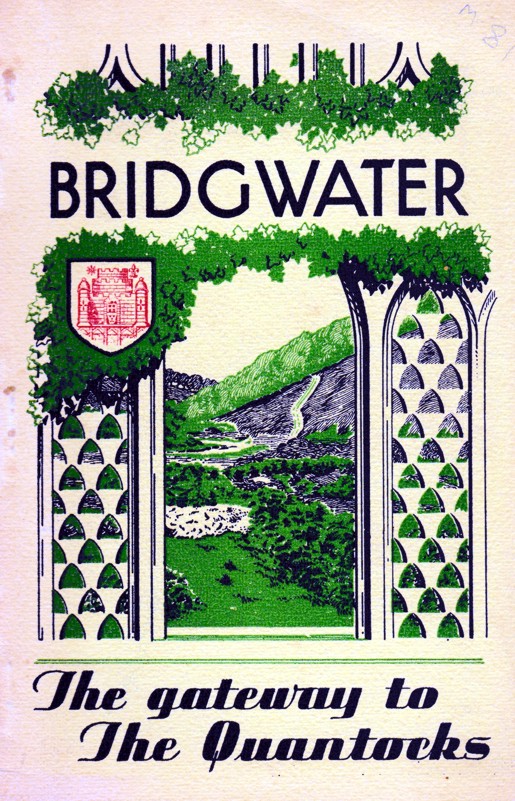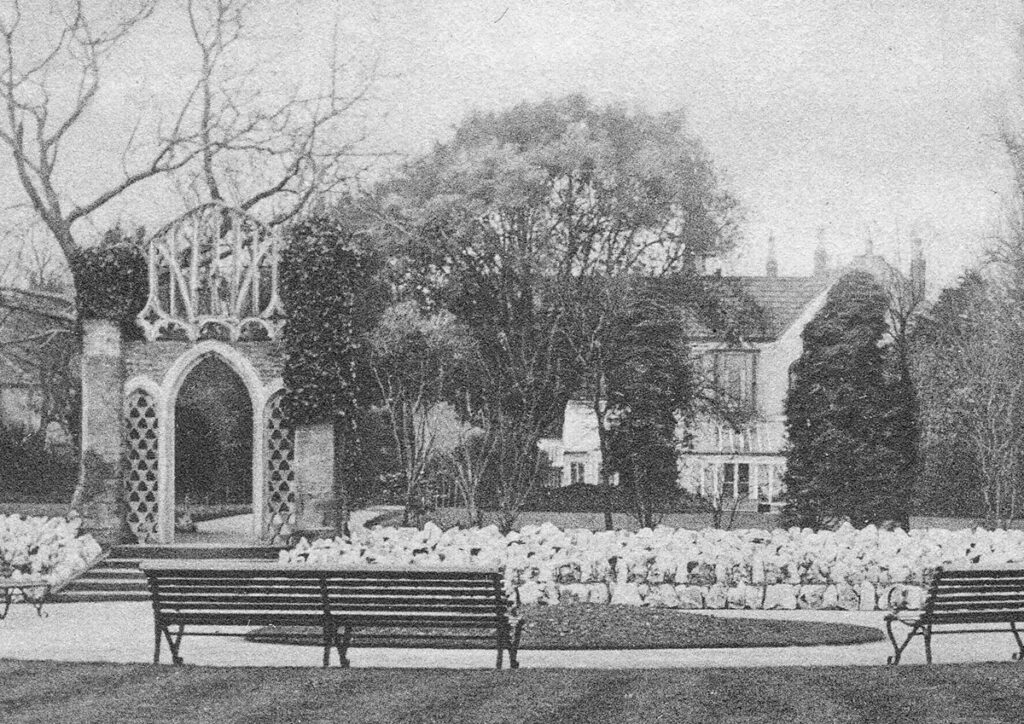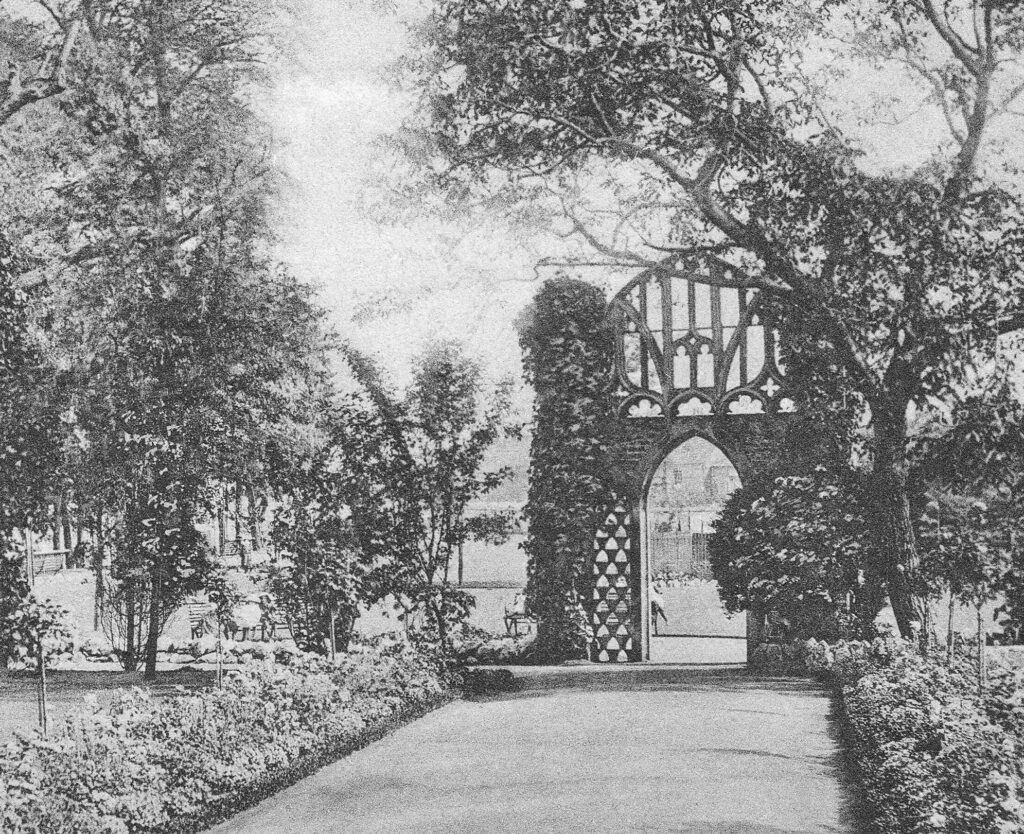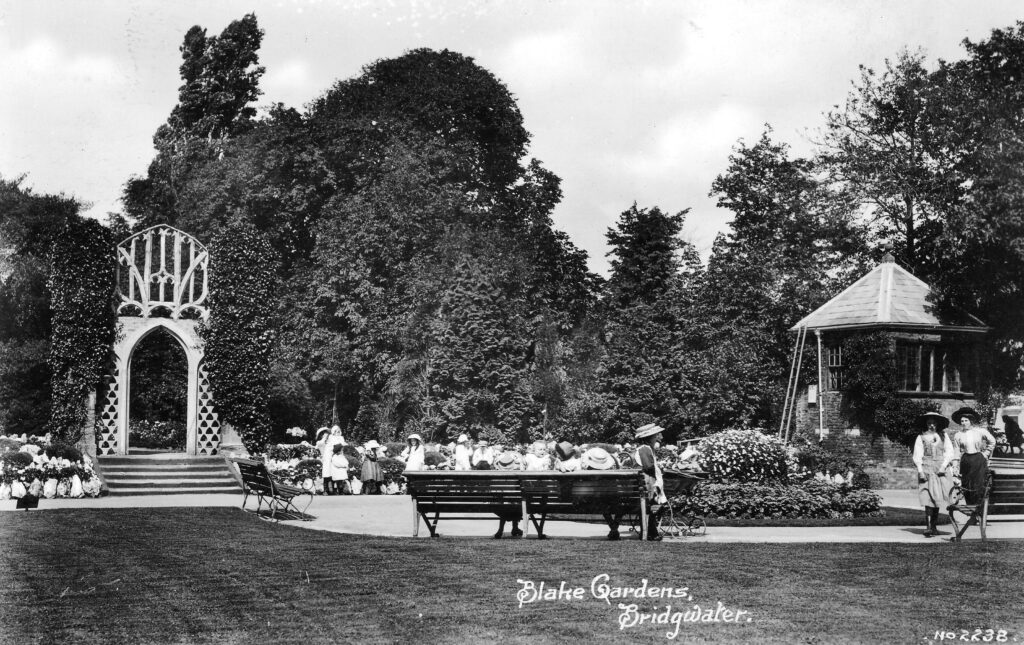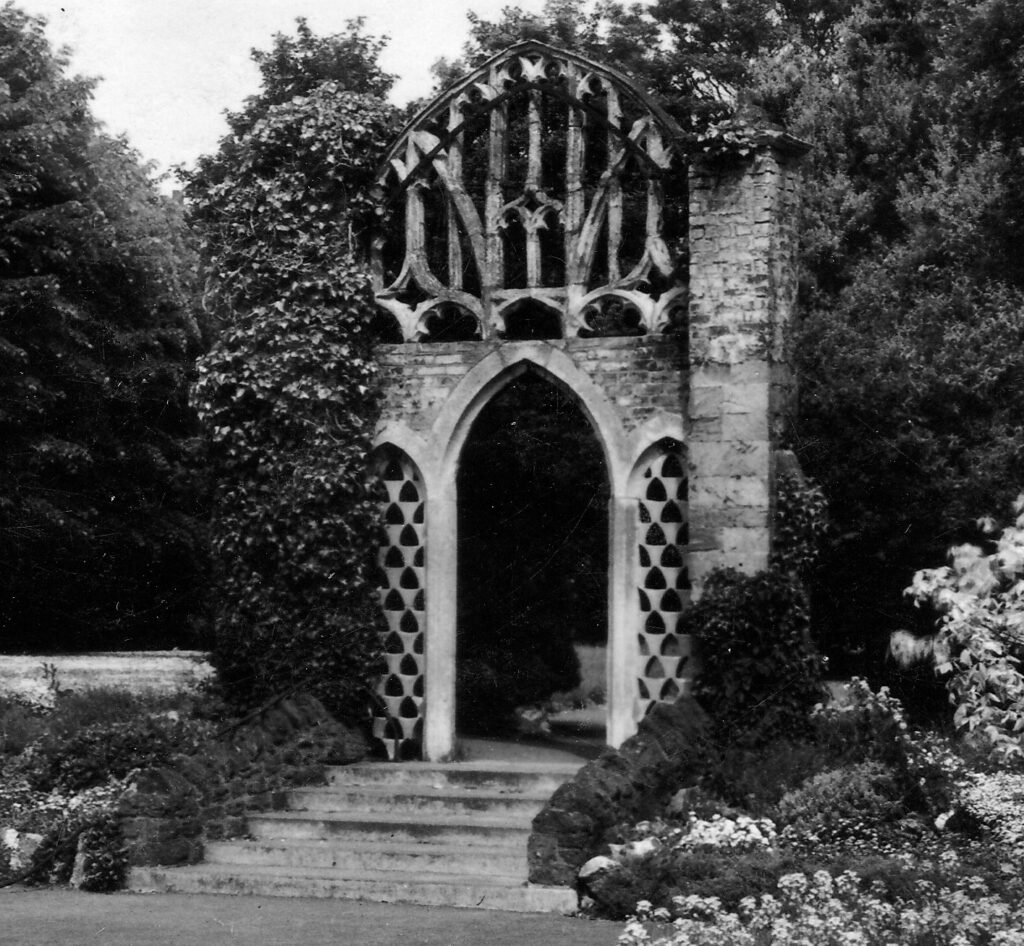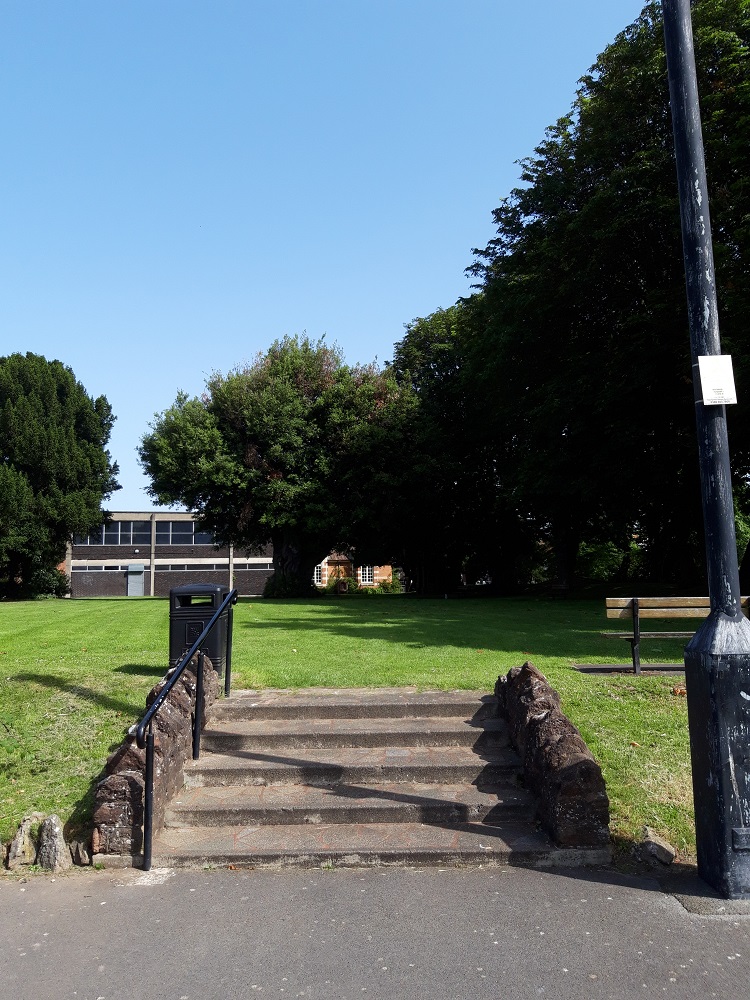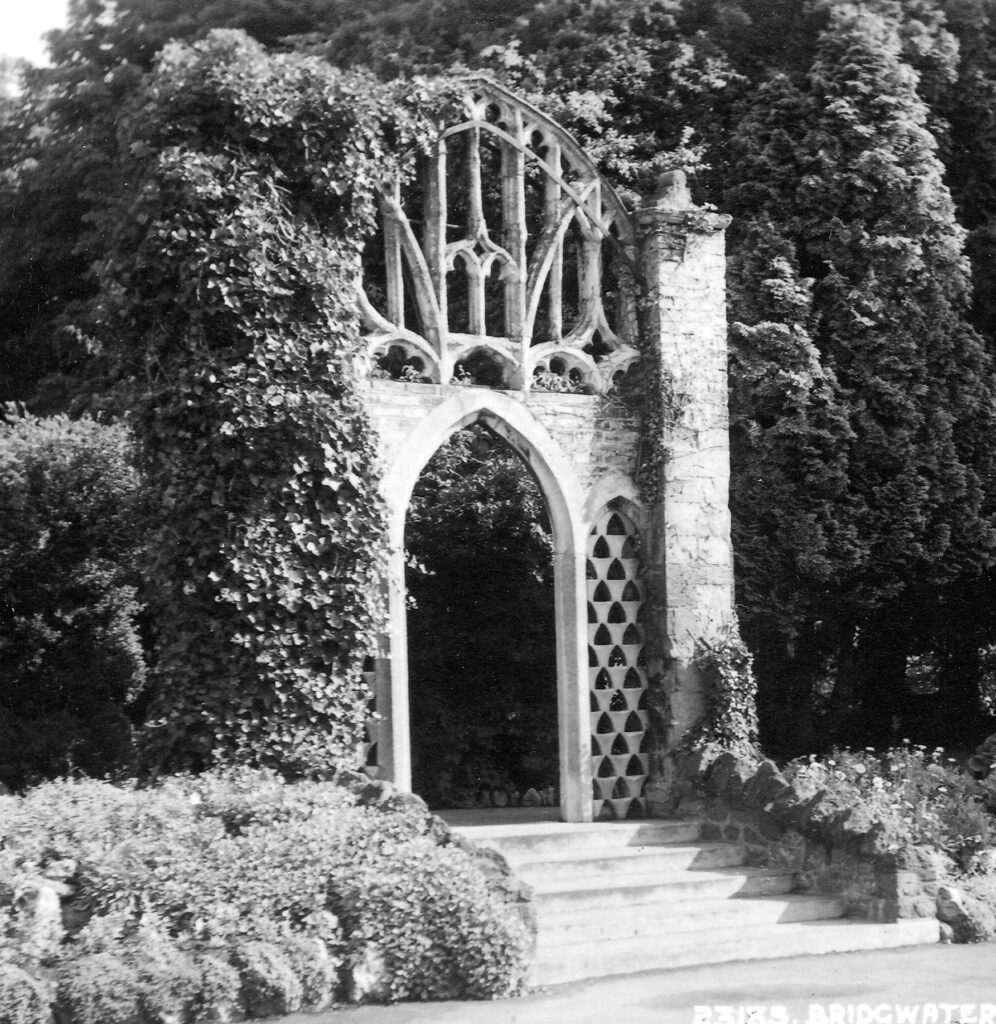
The Arch in Blake Gardens was a folly that had belonged to the gardens of Binford House.
The folly was of two halves. The lower portion looks to have been specifically built for the structure. The upper half was the upper portion of some gothic window tracery of the perpendicular style. This could have been an off-the-shelf piece, bought new for the folly from a supplier of gothic revival masonry. However, it is most likely to have been a cast off from one of the local churches engaged in renovation, or a piece of salvage from a medieval or gothic revival building that had been demolished. There is certainly a strong resemblance with this window and the old east window of St. Mary’s church here.
The following letter appeared in the Mercury on 8th February 1939 (kindly supplied by John Stuckey)
A well-known writer on archaeology when visiting Bridgwater last summer made a valid suggestion regarding the origin of the arch in Blake Gardens. He thought that the tracery probably came from the north transept of St. Marys. On measurements being taken of the arch, it was found that they corresponded with those of the window, and further enquiries resulted in good reason for believing that the transfer took place in the middle of the 19th century.
T. Bruce Dilks
Local word is that the structure was taken down in the late twentieth century for health and safety reasons. Certainly photographs in its later years show it to have weathered badly over the years.
